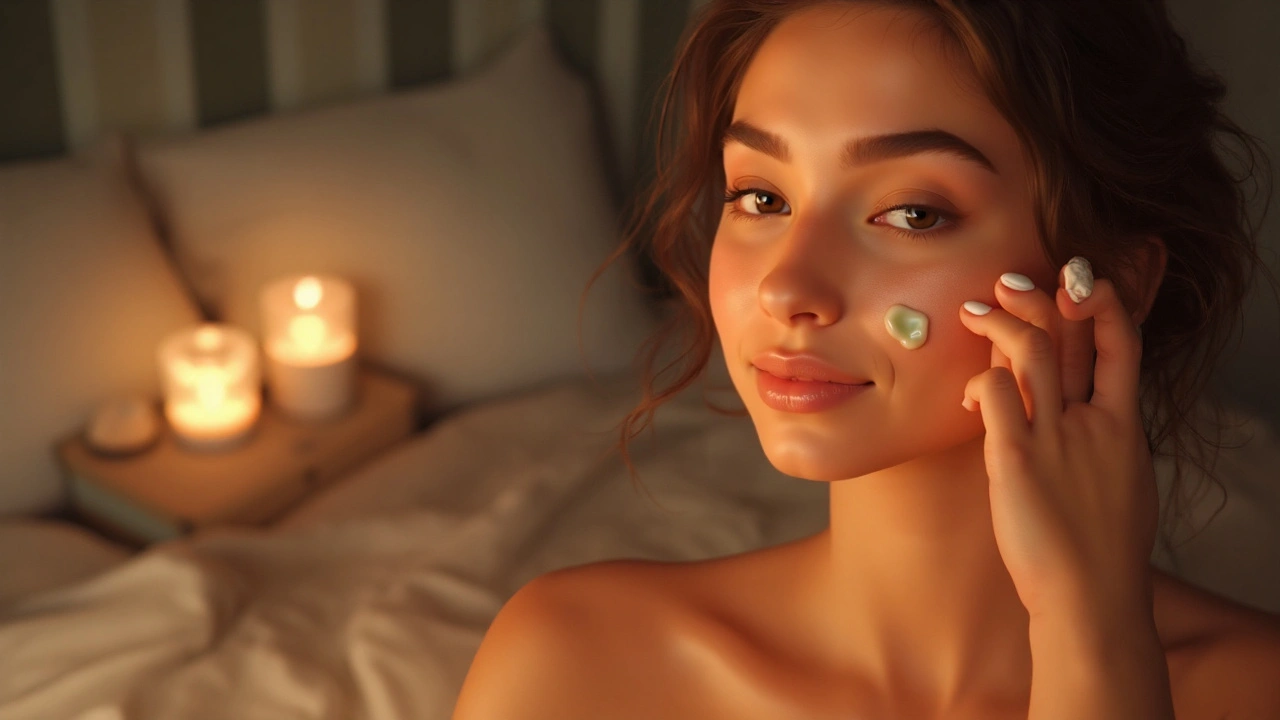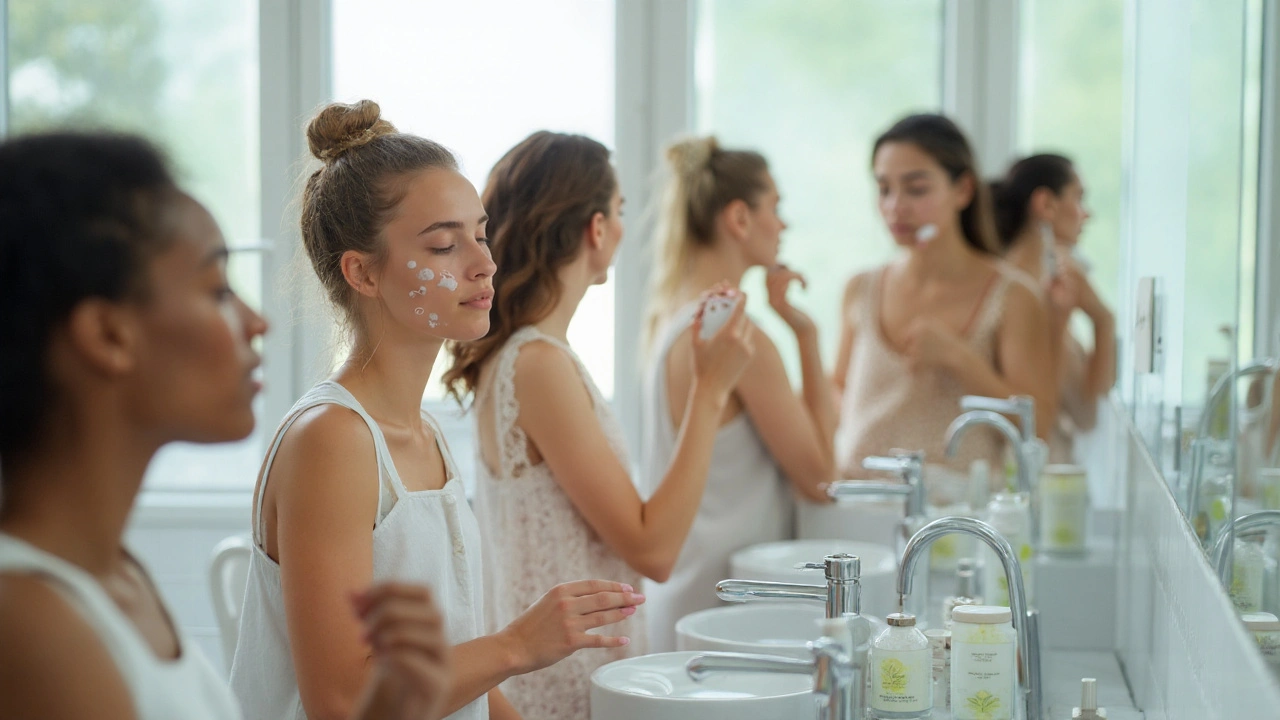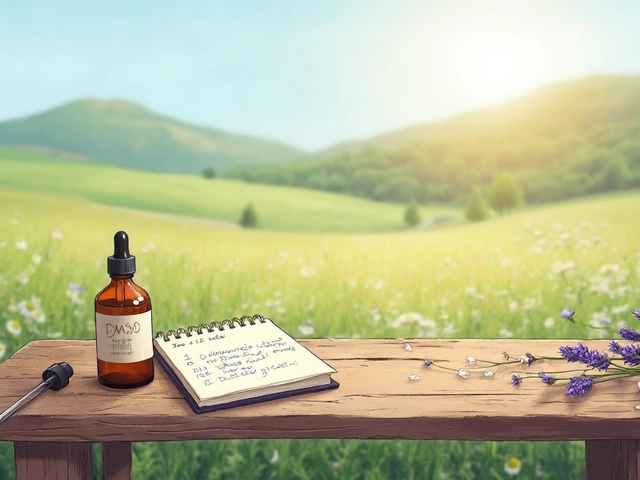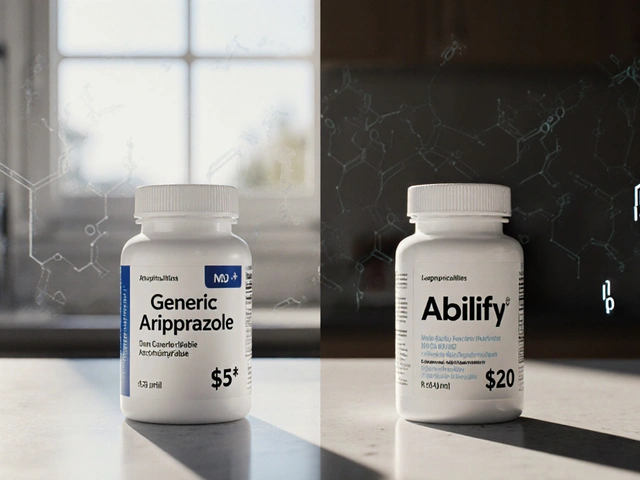How to Safely Combine Benzoyl Peroxide with Other Acne Treatments
Key Takeaways
- Start with a low benzoyl peroxide concentration (2.5%) and build tolerance.
- Pair it with non‑comedogenic, pH‑balanced actives like salicylic acid or niacinamide.
- Separate potentiating ingredients (retinoids, azelaic acid) by at least 30minutes or use on alternate nights.
- Always follow with a soothing moisturizer and broad‑spectrum SPF.
- Monitor irritation and adjust frequency before adding new products.
Benzoyl Peroxide is a topical oxidizing agent that kills acne‑causing bacteria and helps unclog pores. Typical concentration ranges from 2.5% to 10%, used once or twice daily. It works by releasing free radicals that oxidize the cell walls of Propionibacterium acnes (now Cutibacterium acnes), the primary culprits behind inflammatory lesions. Because it’s an oxidative agent, it can also cause dryness and mild peeling, especially when combined with other actives.
Understanding how benzoyl peroxide interacts with other ingredients is the first step toward a balanced acne regimen. Below we break down the most common complementary treatments, the chemistry behind their pairing, and practical layering rules.
Common Acne Actives to Pair With
Salicylic Acid is a beta‑hydroxy acid (BHA) that exfoliates inside the pore. It dissolves sebum‑bound debris, making it a favorite for blackheads. Unlike benzoyl peroxide’s antibacterial action, salicylic acid focuses on keratolysis. When used together, the two agents can address both bacteria and clogged pores, but the combo may increase irritation if applied simultaneously.
Retinoids (e.g., adapalene, tretinoin) are vitaminA derivatives that accelerate skin cell turnover. They prevent new comedones from forming and improve post‑inflammatory hyperpigmentation. Retinoids and benzoyl peroxide are both potent; they should be separated by time or used on alternate evenings to minimize overlap of irritation.
Azelaic Acid is a dicarboxylic acid with antibacterial and keratolytic properties. It’s gentle enough for sensitive skin and helps with rosacea. It can be layered with benzoyl peroxide, but keep the total active load under control - a 10% azelaic formula paired with a 2.5% peroxide is a safe starting point.
Niacinamide is a form of vitaminB3 that reduces inflammation and strengthens the skin barrier. Because it is soothing, niacinamide works well after a benzoyl peroxide application to counteract redness.
Sulfur is a mineral that absorbs excess oil and has mild antibacterial effects. Sulfur masks are often used once a week; they complement peroxide without adding extra chemical exfoliation.
How to Layer Treatments Effectively
The order of application matters because pH and ingredient stability vary. Follow this general sequence:
- Cleanse with a gentle, sulfate‑free cleanser (pH5.5-6.5) to remove excess oil but preserve the acid mantle.
- Apply water‑based actives first. If you’re using salicylic acid or a BHA serum, apply it on a damp face and wait 5-10minutes for penetration.
- Introduce benzoyl peroxide. Use a thin layer (pea‑sized amount) on breakout‑prone zones. Allow 10-15minutes to dry.
- Follow with barrier‑supporting agents. Niacinamide serum or a lightweight humectant can be applied now.
- Seal with a moisturizer. Choose a non‑comedogenic, oil‑free formula containing ceramides or hyaluronic acid.
- Finish with sunscreen (morning routine). Broad‑spectrum SPF30+ protects against UV‑induced inflammation and PIH.
If you plan to use a retinoid, place it on the opposite side of the day: apply benzoyl peroxide in the morning, retinoid at night, or use a 48‑hour rotation (e.g., peroxide night1, retinoid night2).
Safety Tips & Irritation Management
Combining actives can tip the skin's pH balance. Keep these checkpoints in mind:
- Patch test. Apply a small amount of each new product on the jawline for three consecutive nights before full‑face use.
- Start low, go slow. Begin with benzoyl peroxide 2.5% every other day, then increase frequency as tolerated.
- Watch for redness, peeling, or burning. If irritation persists beyond 5‑7days, reduce concentration or skip the complementary acid that night.
- Maintain hydration. A barrier‑repair moisturizer containing Moisturizer is a non‑comedogenic emulsion that replenishes lipids reduces dryness caused by peroxide and acids.
- Never skip sunscreen. UV exposure worsens post‑inflammatory hyperpigmentation; a Sunscreen with zinc oxide or titanium dioxide offers physical protection with minimal irritation.

Sample Regimens for Different Skin Types
Normal to Oily Skin (no severe sensitivity)
- Morning: Cleanser → 2% salicylic acid serum → 2.5% benzoyl peroxide spot treatment → lightweight moisturizer → SPF30.
- Evening: Cleanser → niacinamide serum → moisturizer.
- Twice weekly: Sulfur mask (apply after cleanser, leave 10min, rinse).
Sensitive or Reactive Skin
- Morning: Cleanser → 2.5% benzoyl peroxide (single spot) → barrier‑repair moisturizer → SPF30.
- Evening: Cleanser → azelaic acid 10% cream → moisturizer with ceramides.
- Every other night: Skip peroxide; use niacinamide serum to calm.
Combination Skin (acne‑prone T‑zone, dry cheeks)
- Morning: Gentle cleanser → targeted salicylic acid on T‑zone → 2.5% benzoyl peroxide on active lesions → oil‑free moisturizer → SPF30.
- Evening: Cleanser → niacinamide on cheeks → retinoid (adapalene 0.1%) on T‑zone only (skip on peroxide nights).
Related Concepts and Next Steps
Beyond the actives listed, consider the broader ecosystem of acne management:
- Hormonal Acne. Oral contraceptives or spironolactone can address root causes for adult women.
- Diet & Lifestyle. Low‑glycemic diets, reduced dairy, and stress management often improve breakout frequency.
- Professional Treatments. Light therapy, chemical peels, or oral isotretinoin may be options when topicals plateau.
After mastering the basic combination of benzoyl peroxide with other actives, you might explore how to integrate oral antibiotics or systemic retinoids into a longer‑term plan. Each addition should be discussed with a dermatologist.
Quick Reference Table
| Active | Primary Mechanism | Typical Concentration | Recommended Frequency with Peroxide | Irritation Risk |
|---|---|---|---|---|
| Salicylic Acid | Keratin dissolution inside pores | 0.5-2% | Same AM routine, wait 5min before peroxide | Low‑moderate |
| Retinoids (Adapalene) | Cell turnover acceleration | 0.1% | Alternate nights or 30min separation | Moderate‑high |
| Azelaic Acid | Antibacterial + keratolytic | 10-15% | Same PM routine, apply after peroxide | Low‑moderate |
| Niacinamide | Barrier support & anti‑inflammatory | 2-5% | Can follow peroxide immediately | Very low |
Final Thoughts
Mixing benzoyl peroxide acne treatments with other actives isn’t a free‑for‑all recipe; it’s a balancing act of chemistry, skin tolerance, and timing. By starting low, monitoring irritation, and respecting the order of application, you can harness the antibacterial punch of peroxide while still benefiting from exfoliation, barrier repair, and pigment control. Remember, the skin’s health is a marathon, not a sprint - consistency beats chaos every time.

Frequently Asked Questions
Can I use benzoyl peroxide and salicylic acid together?
Yes, but apply the salicylic acid first, wait about 5-10minutes, then add a thin layer of benzoyl peroxide. Starting with low concentrations helps prevent excessive dryness.
Should I use a retinoid on the same night as benzoyl peroxide?
It’s best to separate them. Either apply the retinoid 30minutes after peroxide (if your skin tolerates it) or alternate nights to keep irritation low.
How often can I apply benzoyl peroxide?
Begin with every other day. Once your skin adjusts (usually 1-2weeks), you can increase to once or twice daily, depending on the concentration and your skin’s response.
Is it safe to combine benzoyl peroxide with azelaic acid?
Generally safe. Use a 10% azelaic cream in the evening and a 2.5% peroxide in the morning, or apply both at night but keep the total active load moderate.
What moisturizer works best with benzoyl peroxide?
Look for a non‑comedogenic, fragrance‑free formula with ceramides, hyaluronic acid, or glycerin. These ingredients lock in water without clogging pores.
Do I need sunscreen if I’m using benzoyl peroxide?
Absolutely. Peroxide can make skin more photosensitive, and UV exposure worsens post‑inflammatory marks. Choose SPF30+ with zinc oxide or titanium dioxide for minimal irritation.
Can I use benzoyl peroxide while on oral antibiotics?
Yes, topical peroxide and oral antibiotics can be combined, but keep the topical regimen simple to avoid over‑drying. Your dermatologist can tailor the exact schedule.







8 Comments
David Brice
September 22, 2025 at 00:25
Hey folks, just wanted to say you’ve got a solid base here – start low with that 2.5% peroxide and give your skin some breathing room. If you notice a little flake‑off, that’s normal, not a disaster. Pair it with a gentle BHA like salicylic acid first, wait a few minutes, then slap on the peroxide. Nighttime is a good window for a quick moisturizer with ceramides to keep the barrier happy. Keep an eye on any redness and dial back if it looks too angry. You’ll get there, trust the process.
Zachary Schroer
October 6, 2025 at 02:25
Honestly, the science is obvious – pH matters, timing matters 😎💊
Stacy Whitman
October 20, 2025 at 04:25
America’s skin deserves the best, not foreign hacks.
Kim and Lin
November 3, 2025 at 05:25
I totally agree with the layering order – a quick BHA, then peroxide, then a soothing niacinamide 😊. It's like building a wall, each layer supports the next. Keep the moisturizer light, otherwise you’ll feel greasy. And don’t forget SPF – the sun will love to spotlight any leftover irritation.
Kemari Nielson
November 17, 2025 at 07:25
Use a clean, non‑comedogenic moisturizer after peroxide.
Steve Helsel
December 1, 2025 at 09:25
Sure, the guide is decent, but it skips the fact that many people just end up with a dry desert face. Maybe mention a richer barrier cream for winter.
Steve Moody
December 15, 2025 at 11:25
While the article does a commendable job of outlining the basic chemistry, it unfortunately falls short in addressing the nuanced interplay between barrier function and aggressive actives. First, the recommendation to apply benzoyl peroxide immediately after a BHA overlooks the fact that the skin’s pH after a BHA application can drop to around 3.5, potentially destabilizing the peroxide molecules. Second, the guide omits any discussion of the oxidative stress that repeated peroxide use can impose on the stratum corneum, which may accelerate transepidermal water loss over time. Third, there is a glaring absence of guidance on how to adjust the regimen for individuals who are concurrently using prescription oral antibiotics or hormonal therapies. Fourth, the suggestion to pair a 2.5% peroxide with a 10% azelaic cream assumes that the user’s skin can tolerate a cumulative active load of 12.5%, which is a risky assumption for most acne‑prone patients. Fifth, the article glosses over the potential for cross‑reactivity between peroxide and certain fragrance components found in many over‑the‑counter moisturizers, leading to unexpected contact dermatitis. Sixth, the timing of the retinoid separation is described vaguely – “30 minutes” – but research indicates that a full hour or even a full night may be necessary for optimal tolerability. Seventh, the suggestion to “use a lightweight moisturizer” fails to consider that lightweight formulations often contain alcohols that can counteract the soothing intent of the barrier repair step. Eighth, the piece does not address the importance of a consistent routine; sporadic use of peroxide can actually exacerbate inflammatory lesions rather than improve them. Ninth, the advice to “never skip sunscreen” is sound, yet the article neglects to differentiate between chemical and mineral sunscreens, the latter being far less irritating for peroxide‑treated skin. Tenth, the sample regimens lack any mention of patch testing, a simple yet critical safety step that can prevent disastrous reactions. Eleventh, the table providing “irritation risk” categories is overly simplistic, ignoring individual variability in skin microbiome composition. Twelfth, the article could benefit from a brief FAQ about how to manage the inevitable initial flaking phase, which many readers find discouraging. Thirteenth, the tone of the guide, while friendly, occasionally slips into jargon that could confuse beginners. Finally, a holistic approach that incorporates lifestyle factors such as diet, stress management, and sleep hygiene would round out the guidance nicely, reminding readers that skin health is never just about topical actives.
Adrian Hernandez
December 29, 2025 at 13:25
All that sounds like a pharma‑driven agenda to keep us buying more products; the real answer is to ditch chemicals altogether and stick to natural oil cleansing.